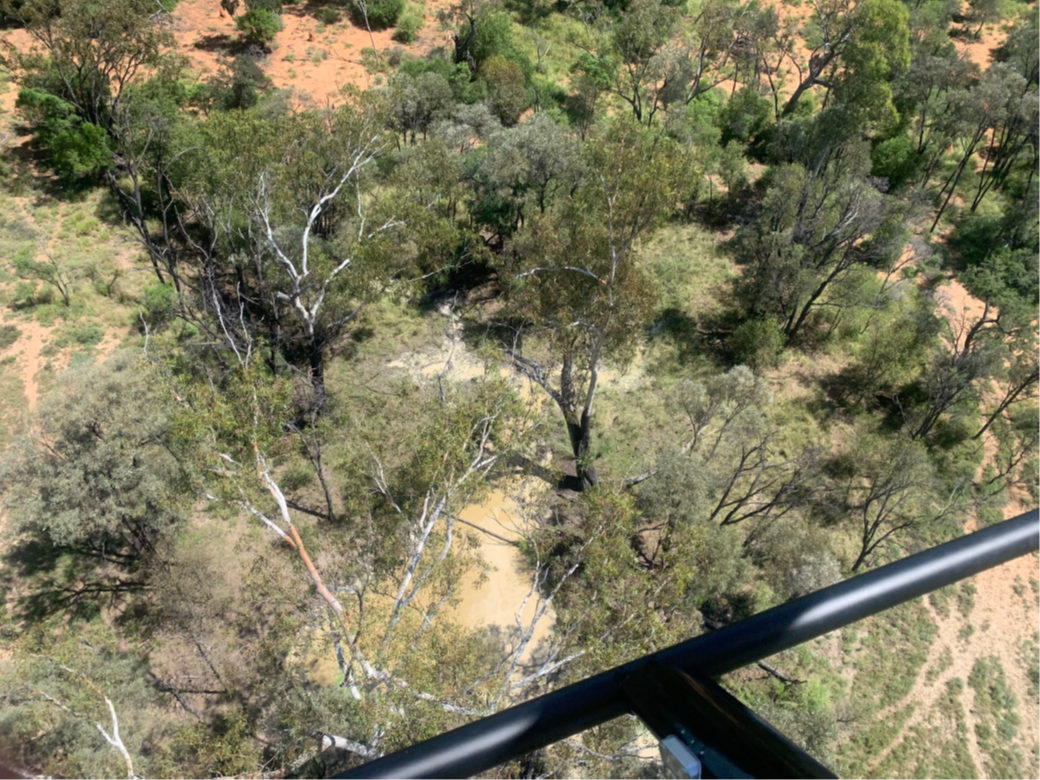Feral pig management case study
Disaster Recovery Funding Arrangements Environmental Recovery Program – Weeds and Pest Sub-program, 2021–22 severe events program

Feral pigs (Sus scrofa) are found across nearly half of Australia and are a destructive invasive species, causing significant environmental, agricultural and public health impacts. These pests foul-up waterholes and wetlands, cause soil erosion, spread weeds disease and parasites, damage crops and pastures, trample habitat and nesting areas (including eggs), compete with and prey upon native animals and stock, and release carbon dioxide from disturbance to soils and vegetation. These behaviours affect a wide many native species including, ground-nesting birds and other ground-dwelling animals (e.g. echidna), marine and freshwater turtles, frogs, snakes, and those that burrow into riverbanks (e.g. platypus); with approximately 40 threatened species are at risk from feral pigs.

Increased availability of food and water saw an increase in feral pigs across the Burdekin Dry Tropics region following the extreme rainfall events in 2021–2022.
The project was supported by the jointly funded Commonwealth-State Disaster Recovery Funding Arrangements – Environmental Recovery Program (administered by Department of the Environment, Tourism, Science and Innovation). NQ Dry Tropics Natural Resource Management (NRM) group were awarded a $265,440 grant under the Weeds and Pest Management sub-program to implement feral pig management programs within the Barcaldine and Isaac Regional Council areas.
The project area focussed on the upper Burdekin Catchment including Native Companion Creek, Belyando River and Mistake Creek, covering an area of 750,000 hectares (ha).
NQ Dry Tropics partnered with Isaac Regional Council, Barcaldine Regional Council and landholders to form a collaborative programme of best practice feral pig management. Dusty Trail Helicopters Pty Ltd ATF were contracted to undertake stakeholder engagement and conduct aerial shooting activities. Landholders were contacted to gain their support and provide information on the project. Workshops were held to identify key locations and movement of feral pigs to inform locations and timing for aerial culling rounds, the cost of infrastructure damage (caused by feral pigs) and subsequent repairs. As a result, three landowner syndicates were formed - Native Companion Creek, Belyando River and Mistake Creek.
Four three-day aerial rounds took place in March 2023, September 2023, January 2024 and May 2024. A total of 3,869 feral pigs and 44 wild dogs were culled across the four rounds, with a total flight time of 177 hours. The cost per head ranged from $42 to $74 per pig (averaging $63 per pig), which compares favourably with the estimated combined economic damage per pig of approximately $590-$903. Environmental conditions played a large role with more efficient rates achieved during dryer periods resulting in pigs being concentrated around fewer areas (water sources).
Whilst the aerial culling was successful, many feral pigs remain in the project area. One landowner in the Mistake Creek syndicate reported shooting 60 pigs on his property less than a month after the first round of aerial culling. This demonstrates that although aerial shooting is an effective technique for the rapid control of feral pigs, integrated management using a range of control techniques is likely to produce better results.
The efficiency rate of aerial culling is reduced by low pig densities (either from pigs being more spread out during wet period or groups found during rounds), areas with heavy canopy cover, and inclement weather. The use of thermal-assisted aerial shooting (TAAS) can improve pig detection and therefore efficiency in areas of heavy canopy cover or low feral pig density.
Alternative feral pig management practices may be necessary in areas with heavy canopy cover, or where aerial culling or toxic baits are not suitable for safety reasons (e.g. near populated areas or areas with threatened species). For example, feral pig trapping using drop nets and suspended traps combined with periods of baiting (non-toxic) for ≥7 days prior to trap setting and use of remote technologies, has been shown to be effective and economical at medium scales.
In 2002 feral pigs were listed as a “Key Threatening Process” to endangered species and ecological communities under the Commonwealth Environment Protection and Biodiversity Conservation Act 1999 (EPBC Act).


